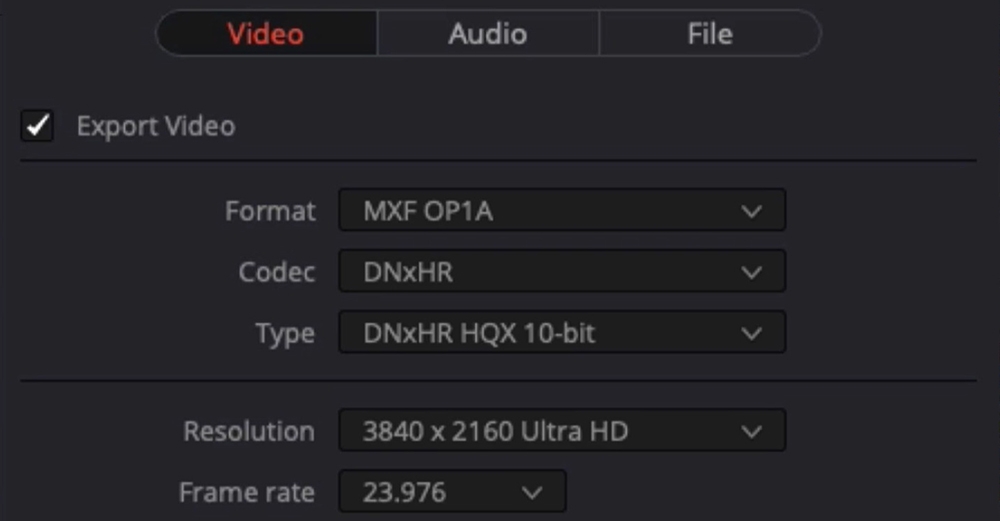
The ultimate DNxHR and ProRes guide
By Lowepost
T he Avid DNxHR and Apple Prores codec families are designed to meet the needs of modern, streamlined post-production workflows.
These days we capture source material on a variety of cameras- action cams, smart phones, drones and high-resolution cameras, and codecs makes it easy to work with any formats. With the growing demand for 4K deliveries, we need fast and reliable codecs that ensure reel-time playback while maintaining superior image quality.
Both the DNxHR and ProRes families offer a variety of codecs for different compressions, data rates and file sizes. Some with just enough image information needed for editing, others for high-quality color grading and finishing, and lossless ones for mastering and archiving.
Below are the full list of codecs from both families.
| Codec | Color sampling | Usage |
|---|---|---|
| DNxHR 444 | 4:4:4 | Finishing |
| DNxHR HQX | 4:2:2 | Finishing |
| DNxHR HQ | 4:2:2 | Mezzanine* |
| DNxHR SQ | 4:2:2 | SQ Editorial |
| DNxHR LB | 4:2:2 | LQ Editorial |
| ProRes 4444 XQ | 4:4:4 | Finishing |
| ProRes 4444 | 4:4:4 | Finishing |
| ProRes 422 HQ | 4:2:2 | Mezzanine* |
| ProRes 422 | 4:2:2 | Mezzanine* |
| ProRes 422 LT | 4:2:2 | SQ Editorial |
| ProRes 422 Proxy | 4:2:2 | LQ Editorial |
* In this case, Mezzanine means a compressed file that can be used to produce additional compressed files, but it is not necessarily useful for finishing work.
Codec facts:
- DNxHR 444, ProRes 4444 and ProRes 4444 QC are the only codecs with embedded alpha channels.
- DNxHR 444 and ProRes 4444 XQ are the only codecs that fully preserve the details needed in HDR- (high-dynamic-range) imagery.
- Both codec families are resolution independent, but bitrate will vary depending on if you output a proxy file or a higher resolution file.
- Both codec families can be wrapped inside MXF or MOV containers.
For more detailed specifications:
Full DNxHR codec list
Full ProRes codec list
Codec differences
DNxHR and ProRes was optimized to be visually lossless through many generations of decoding and re-encoding. Some claim to have noticed performance differences, but studies have shown that the quality and speed differences are negligible.
An important difference, however, is that some of the major editing and finishing systems available lacks support for ProRes encoding for Windows. This means Windows users can read a ProRes encoded file, but in some cases cannot export one. For this reason, many post-production facilites have abandoned ProRes and implemented a full DNxHR workflow.
There are systems that Apple fully supports such as the Adobe programs, Nuke and Scratch, but DNxHR is accessible universally.
Another important reason for the success of DNxHR is that Avid can read the files natively from its own MXF file structure. This eliminates the need to import clips and timeline rendering.
Lowepost
-
 4
4
-
 3
3
Recommended Comments
There are no comments to display.
Join the conversation
You can post now and register later. If you have an account, sign in now to post with your account.
Note: Your post will require moderator approval before it will be visible.